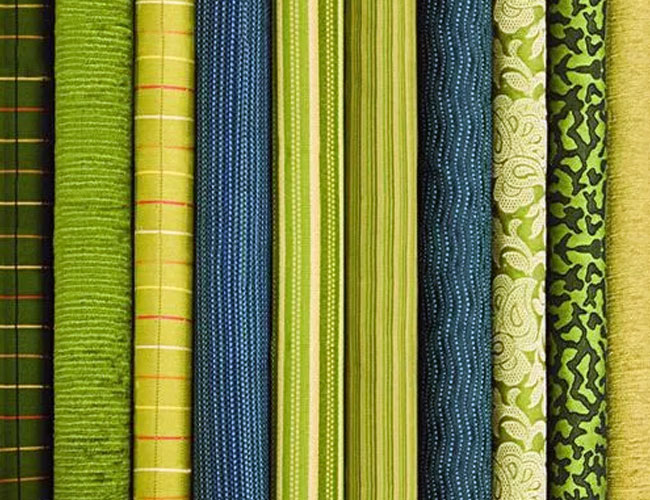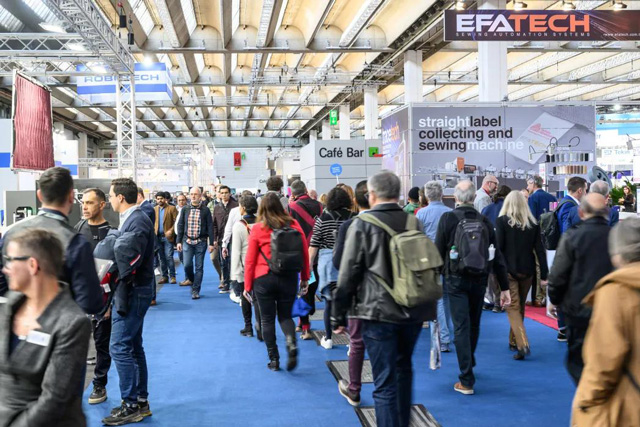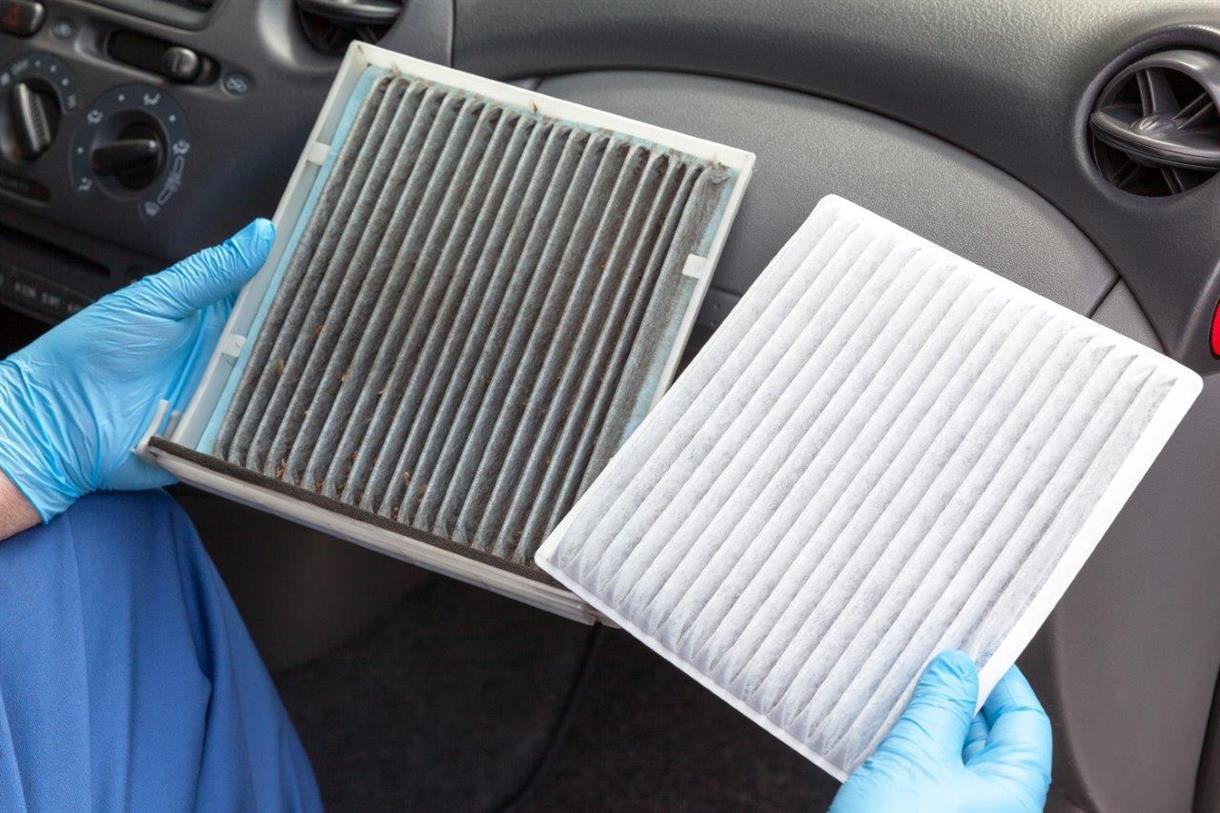
Lyocell fabric is a type of cellulosic fiber known for its eco-friendly and sustainable characteristics. It is produced using a manufacturing process that involves dissolving wood pulp, typically sourced from eucalyptus or other types of sustainable trees, in a solvent. The resulting solution is then extruded through fine holes to create fibers, which are then solidified through various methods.
Lyocell fabric is often used to create a variety of clothing items, including dresses, blouses, shirts, and more. It can also be blended with other fibers, such as cotton or wool, to enhance certain properties of the resulting fabric. Overall, Lyocell is considered a sustainable alternative to traditional synthetic fibers, contributing to more environmentally conscious and responsible fashion choices.
Lyocell is a type of fiber known for its environmentally friendly production process and desirable properties. It is primarily used in the textile and fashion industries due to its unique characteristics. Some of the common uses of Lyocell include:
1. Clothing: Lyocell is often used to make clothing items such as dresses, skirts, shirts, and even denim jeans. Its smooth surface, softness, and ability to drape well make it a popular choice for a range of garments.
2. Bedding: Lyocell is also used in the production of bedding products like sheets, pillowcases, and duvet covers. Its breathability, moisture-wicking properties, and smooth texture contribute to a comfortable sleep environment.
3. Home Textiles: The fiber is used in various home textiles such as towels, bathrobes, and curtains. Its absorbent nature and silky feel make it suitable for these applications.
4. Athletic Wear: Lyocell's moisture-wicking abilities make it suitable for athletic and sportswear. It can help keep the body dry during physical activities by effectively managing sweat and moisture.
5. Intimate Apparel: Its softness and smooth texture make Lyocell a good choice for lingerie and undergarments.
6. Accessories: Lyocell can also be used to make accessories like scarves and shawls. Its lightweight nature and ability to retain color well contribute to the quality of these items.
7. Footwear: Some footwear brands use Lyocell in the lining or upper materials of shoes due to its breathable and comfortable properties.
8. Industrial Applications: Lyocell's absorbent qualities make it useful for various industrial applications, such as filters, wipes, and medical dressings.
One of the key reasons Lyocell is gaining popularity is its sustainable production process. It is produced from wood pulp, often sourced from sustainably managed forests, and the solvent used in the production process is typically recycled in a closed-loop system, minimizing environmental impact compared to traditional methods of producing textiles. Additionally, Lyocell's properties such as softness, breathability, and moisture management make it a versatile choice for a wide range of applications.
1. Eco-Friendly: Lyocell is often praised for its environmentally friendly production process. The solvent used in the manufacturing process is typically a closed-loop solvent, meaning it can be reused and recycled, minimizing waste and reducing the environmental impact.
2. Softness: Lyocell fibers are exceptionally soft to the touch, making fabrics made from this material comfortable to wear.
3. Breathability: The fibers have a smooth surface that allows for better breathability, making it a good choice for clothing in warm weather.
4. Moisture Absorption: Lyocell fibers have natural moisture-wicking properties, absorbing moisture from the skin and releasing it into the air, which can help keep the wearer dry.
5. Anti-Bacterial: Lyocell has been found to have natural antibacterial properties, making it a good choice for garments that need to stay fresh and odor-free.
6. Drapability: Fabrics made from Lyocell have a nice drape and can be used for a variety of clothing items.
7. Color Retention: The fabric tends to retain dye well, resulting in vibrant and long-lasting colors.
8. Biodegradability: Lyocell is biodegradable, meaning that it can naturally break down over time without causing significant harm to the environment.
Lyocell fabric, also known by the brand name Tencel, is a type of cellulose-based fabric made from wood pulp. While it has several advantages, such as being environmentally friendly and soft, it also has some disadvantages. Here are some disadvantages of lyocell fabric:
1. Cost: Lyocell fabric can be more expensive to produce than conventional fabrics like cotton or polyester. The production process involves specialized equipment and chemical processing, which can contribute to higher costs.
2. Sensitivity to Moisture: While lyocell is generally more moisture-absorbent than synthetic fabrics like polyester, it can also become weaker when wet. This means that the fabric may not be as durable when exposed to excessive moisture or humidity over time.
3. Wrinkling: Lyocell fabric is prone to wrinkling, which can be a drawback for people who prefer low-maintenance clothing. Although the fabric is often blended with other materials to improve its wrinkle resistance, pure lyocell garments may require more care to maintain their appearance.
4. Shrinkage: Pure lyocell fabrics can experience shrinkage when exposed to high temperatures, whether during washing or drying. This can lead to changes in the fit and dimensions of garments, potentially making them uncomfortable to wear.
5. Dyeing Challenges: The dyeing process for lyocell can be more complex compared to other fabrics. Achieving consistent and vibrant colors on lyocell fabric may require special dyeing techniques, which can increase production costs and environmental impact.
6. Limited Availability: While lyocell is becoming more popular, it may still be less readily available than traditional fabrics in some regions. This could affect its accessibility and affordability for consumers.
7. Chemical Processing: The production of lyocell involves the use of chemicals, including a solvent called N-Methylmorpholine N-oxide (NMMO). Although efforts are made to recycle and minimize the environmental impact of these chemicals, there are still concerns about the potential environmental and health effects of their use.
8. Biodegradability Concerns: While lyocell is often marketed as biodegradable and eco-friendly due to its plant-based origin, its complete biodegradation process might still take a significant amount of time under certain conditions. This could raise concerns about its environmental impact when disposed of in landfills.
9. Lack of Natural Texture: Some people prefer fabrics like cotton or linen for their natural textures. Lyocell, while soft, can sometimes lack the distinct feel and appearance of these other natural fibers.
10. Durability: While lyocell can be quite strong when dry, its strength can diminish when wet. This could affect its overall durability, especially in garments that might be exposed to moisture frequently.
It's important to note that many of these disadvantages are not absolute and can vary depending on the specific manufacturing processes, blends, and treatments used in producing lyocell fabric. As with any material, there are trade-offs to consider when choosing a lyocell for different applications.
Lyocell is a type of cellulosic fiber made from wood pulp, and its production involves several steps that transform wood pulp into the final fabric. The primary method used to produce lyocell is the solvent-spinning process. Here's an overview of how lyocell is made:
1. Wood Pulp Preparation: The process begins with sourcing sustainable wood, often eucalyptus or beechwood, as the raw material. The wood is first chipped into small pieces and then chemically processed to create wood pulp. This pulp is a mix of cellulose fibers, hemicellulose, lignin, and other components.
2. Dissolving Cellulose: The wood pulp is dissolved in a non-toxic organic solvent called N-Methylmorpholine N-oxide (NMMO). This solvent selectively dissolves the cellulose fibers while leaving behind the other components of wood pulp. This creates a solution called "dope" that consists mainly of cellulose dissolved in NMMO.
3. Spinning: The cellulose-NMMO solution is then forced through spinnerets, which are fine nozzles, into a coagulating bath containing a different liquid, usually water. As the cellulose solution comes into contact with the coagulating bath, the NMMO solvent is rapidly removed, and the cellulose fibers re-solidify in a thread-like form. This forms continuous filaments of cellulose fiber.
4. Washing and Purification: The newly formed cellulose filaments are washed to remove any residual NMMO and other impurities. The recovered NMMO can often be recycled and reused in the process, reducing waste.
5. Drying and Finishing: The wet cellulose filaments are dried to produce lyocell fibers. The fibers can then be further processed through various finishing techniques, such as mechanical brushing or chemical treatments, to enhance their properties, such as softness, strength, and color retention.
6. Cutting and Carding: The dried lyocell fibers can be cut into shorter lengths and then carded to align the fibers and create a more uniform and cohesive fiber structure.
7. Spinning into Yarn: The carded lyocell fibers can be spun into yarn using traditional spinning methods. This yarn can be used to create fabrics or blended with other fibers to achieve specific properties.
8. Weaving or Knitting: The lyocell yarn can be woven or knitted into fabric using standard textile manufacturing processes. The resulting fabric can have various textures, finishes, and properties depending on the desired end-use.
9. Dyeing and Finishing: The lyocell fabric can be dyed using different dyeing techniques to achieve the desired color. It can also undergo additional finishing processes to enhance its characteristics, such as softness, moisture-wicking, or wrinkle resistance.
Lyocell is a delicate fabric that requires proper care to maintain its quality and appearance. Here are some general guidelines on how to wash lyocell clothing:
1. Check the Care Label:
Always start by checking the care label on your lyocell garment. The label will provide specific instructions from the manufacturer on how to wash and care for the fabric.
2. Machine Washing:
- Turn the garment inside out before washing. This helps to protect the outer surface of the fabric.
- Use a gentle cycle on your washing machine with cold water. Cold water helps to prevent color fading and fabric shrinkage.
- Use a mild liquid detergent designed for delicate fabrics. Avoid using strong detergents, bleach, or fabric softeners, as they can damage lyocell fibers.
- To prevent tangling and friction, wash lyocell items separately or with similar colors and fabrics.
3. Hand Washing:
- Fill a basin or sink with cold water and add a small amount of mild liquid detergent.
- Gently agitate the water to create suds.
- Submerge the lyocell garment in the water and gently swish it around. Avoid scrubbing or wringing the fabric.
- Let the garment soak for a few minutes, then rinse thoroughly with cold water.
4. Drying:
- After washing, gently squeeze out excess water from the garment. Do not twist or wring the fabric.
- Lay the garment flat on a clean towel and reshape it to its original size.
- Roll up the towel with the garment inside to remove additional moisture.
- Lay the lyocell garment flat on a drying rack or a clean, dry towel away from direct sunlight and heat sources. Avoid hanging lyocell garments, as they can stretch when wet.
- Allow the garment to air dry completely.
5. Ironing and Steaming:
- If necessary, iron the lyocell fabric on a low to medium setting while it is still slightly damp, or use a cloth between the iron and the fabric.
- Alternatively, you can use a steamer to remove wrinkles from lyocell fabric without direct contact.
6. Storing:
- Store lyocell garments in a cool, dry place away from direct sunlight.
- Avoid hanging lyocell items on thin hangers, as they can cause the fabric to stretch.
Lyocell fiber is a regenerated cellulose fiber, which is produced by dry spray wet process without chemical reaction using NMMO (a solvent) solvent system. This fiber is hygroscopic, strong and environmentally friendly.
Cotton is a natural fiber that comes from the cotton plant. Cotton is widely recognized as a natural textile material because of its soft, sweat-absorbent, breathable, comfortable and durable properties.
Viscose fiber, on the other hand, also known as Viscose fiber or viscose fiber, is a regenerated cellulose fiber, similar to Lyocell fiber. However, viscose fiber uses raw materials such as cotton staple or other plant fibers, and the manufacturing process requires the use of chemicals such as sulfuric acid. As a result, its manufacturing cost is somewhat lower than that of Lyocell fiber. However, due to the use of chemicals such as sulfuric acid, viscose fiber is inferior to Lyocell fiber in terms of environmental performance.
Rayon is a synthetic fiber, spun from synthetic resin, and is not a regenerated cellulose fiber.
In summary, Lyocell fiber, cotton, viscose fiber and rayon have obvious differences in raw materials, manufacturing methods and performance.
G&F GROUP's main products are fabrics, including fabrics of various materials, specifications and applications, such as cotton, linen, silk and wool. With rich production experience and advanced production technology, the company can provide customers with high-quality and competitive fabric products.
Meanwhile, 100+ suppliers are constantly launching innovative products to meet customers' changing needs. You are welcome to inquire us, thank you.
All Rights Reserved: https://www.groupgf.com/info-detail/discover-the-technological-mysteries-of-lyocell-fabric
Copyright Notice: This is an original (translated) article from G&F Group Inc., please indicate the source from G&F GROUP INC... If there is any infringement, please contact us first.
 Techtextil & Texprocess Rounded Off
Techtextil & Texprocess Rounded Off
 Nonwovens in daily life ----- filtration
Nonwovens in daily life ----- filtration
 Nonwovens in daily life ----- automotive
Nonwovens in daily life ----- automotive
 What is SAP – superabsorbent polymers
What is SAP – superabsorbent polymers